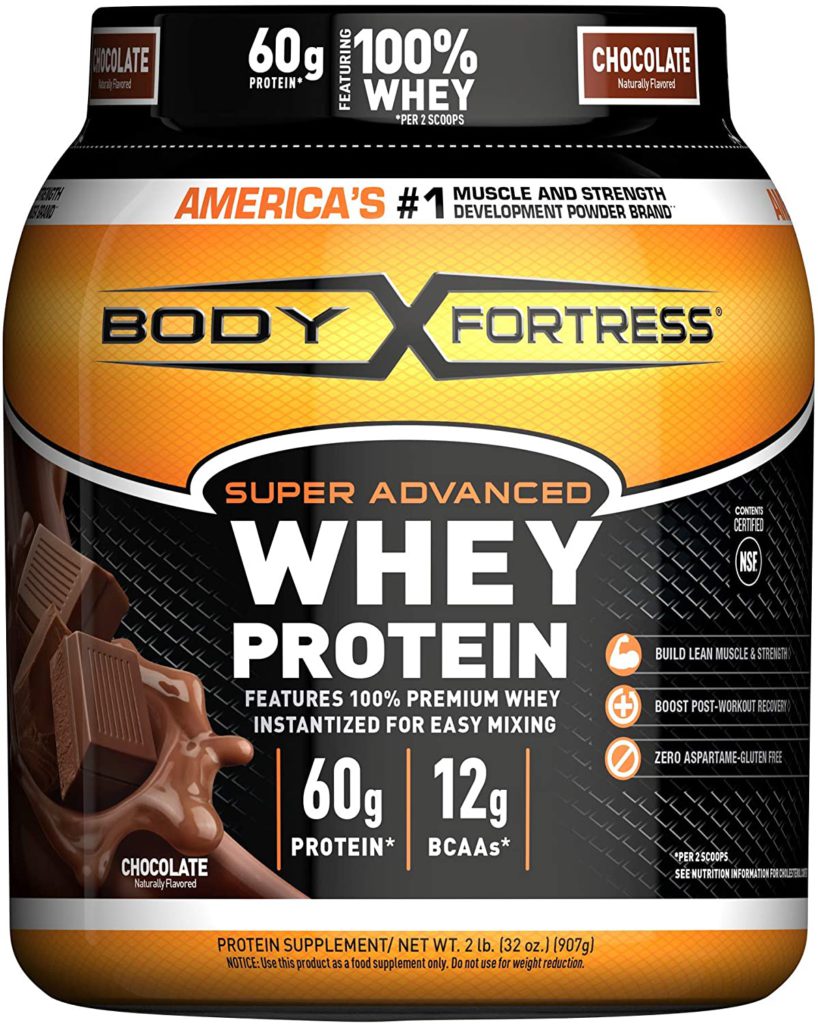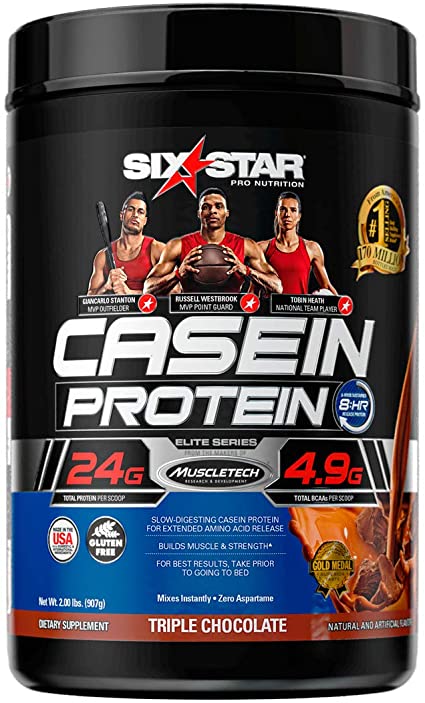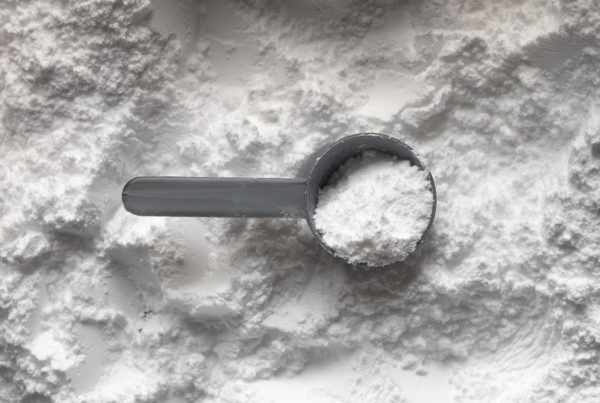Along with the discovery of the importance of the proper supply of protein in the composition of our body, its consumption, especially among athletes, has acquired a new dimension. An adequate supply of protein plays a significant role, in particular, in building muscle mass. In some cases, it is difficult to provide the right amount of protein only from food, so today no one is surprised to see a person supplementing it in the form of a powder. This supplement beats the rest, both in terms of usability and sales. I may even say that every gym enthusiast has reached or will reach for a protein powder at least once in his life. There are many types of protein supplements available on the market, however, whey protein or casein protein are the most frequently chosen by the consumer.
What’s the difference between them?
What kind of protein is better for you?
What are the pros and cons of each protein?
These topics will be discussed in the article.
What is whey protein?
Whey protein supplements are the most frequently chosen form of protein supplements. It is obtained from whey, which is the liquid leftover from cheese production. It undergoes processes that separate protein from carbohydrates, fat, and water.
It comes in several forms that differ in the proportion between macronutrients:
– WPC (whey protein concentrate) – contains about 80% protein, the rest is carbohydrates, fats, and water. It is the most popular protein.
– WPI (whey protein isolate) – 85 – 90% protein in the product, which significantly increases the number of exogenous amino acids that we provide ourselves. The isolate minimizes the amount of fat and carbohydrates to an absolute minimum.
– WPH (whey protein hydrolyzate) – the most advanced product with 90 – 100% pure protein. The process of its production makes the protein in the form of a hydrolyzate extremely quickly digestible. Depriving it of carbohydrates and fats results in a bitter taste.
When is the best time to use whey protein?
Whey is characterized by quick absorption, so it is worth using it immediately after a cycling session. This promotes rapid muscle nourishment and the delivery of a solid dose of anabolic branched-chain amino acids. Another advantage of whey consumption is a higher insulin release, which has strong anti-catabolic properties and its concentration has a valuable effect on the post-workout period.
Which whey supplement we choose depends on our preferences and goals. If you train cycling as an amateur (for example cycling in the mountains), WPC would be perfect.
For more advanced cyclists (professionally trained), I would recommend considering supplementing WPI or WPH.
What is casein protein?
Casein is the most important protein in milk as it makes up about 75% of the amino acids it contains. It can be obtained by dehydrating milk, removing as much lactose and fat from it as possible. The resulting white powder coagulates after reaching the stomach – a gel is formed that is slowly digested by the body. This process may take up from 6 to 7 hours, and it reaches its peak usually after 3.4 hours [1]. During all this time, amino acids are gradually released into the bloodstream, which provides the muscles with the building material necessary for growth.
Casein is naturally present in a higher concentration in white cheeses and young yellow cheeses. You can also use ready-made supplements that contain casein.
Types of casein
Casein is available in two forms: as micellar casein and as calcium caseinate – the difference between them is the method of obtaining them from a dairy product.
Calcium caseinate is produced in the cheese-making process. This compound is obtained by adding calcium hydroxide to the curdling milk, which neutralizes the pH of the sour milk. It is harvested just before the milk is curdled. Calcium caseinate is distinguished by its high content of L-glutamine. Its digestion time is quite short.
Micellar casein is the purest form of casein protein possible. The developed technological process allows obtaining a practically 100% pure product with low lactose content. Micellar casein is obtained by degreasing and cleaning milk from impurities and lactose. At low temperatures, microfiltration occurs – a process that is completely chemical-free. As a result, casein with an inextricable peptide structure with a large amount of L-glutamine and branched-chain amino acids (BCAA) can be obtained. Micellar casein allows you to maintain muscle mass when you switch to a low-calorie diet.
The sustained release of amino acids, the levels of which last for many hours, have a beneficial effect on all cells that need proteins – both for energy purposes and for building purposes. Many studies have confirmed this thesis, and in some cases, the process of reducing catabolism reached even 40%.
When is the best time to use casein?
Casein is best used at night because its properties allow for a steady supply of amino acids during rest, and at the same time prevent muscle catabolism [2]. This is also why it is worth reaching for it during the day to provide muscles with appropriate conditions for growth and regeneration when we do not have the opportunity to eat a meal for a long time.
Casein protein vs whey protein
Whey protein and casein are often presented as two separate products – in fact, they can be called related. Both supplements come from the same source, which is milk. Nevertheless, their properties differ in many respects, but they are complementary to each other.
The main difference is the absorbability. Whey absorbs quickly – thanks to that, there is a sudden increase in the level of amino acids and it lasts for 3-4 hours. Casein, in turn, is classified as a slowly absorbed protein – after taking it, there is no immediate jump in the concentration of amino acids, but they are released systematically in a small amount for 6-7 hours. Whey is also the cause of greater insulin release [3].
Healthy individuals with normal protein intake were tested. They fasted for 10 hours and then received either 30 grams of whey protein or 30 grams of casein. [1] Blood leucine levels peaked an hour after consuming either whey or casein. However, the whey protein group peaked at higher levels and returned to baseline after four hours. The casein protein group peaked at a lower level but did not return to baseline until seven hours later. Whey protein increased protein synthesis by 68 percent but did not affect protein degradation. Casein reduced protein degradation by 34 percent but did not affect protein synthesis.
Whey, therefore, helps to increase the stimulation of protein synthesis in the body, while casein inhibits protein catabolism throughout the body. This means that immediately after taking whey, the number of amino acids that are subject to anabolism increases. Casein, through its systematic action, prevents the breakdown of proteins in the body, which is caused by training effort and post-training muscle damage.
In addition, it is worth remembering that whey is much more effective when the synthesis of muscle proteins takes place in the period from 1 to 3.5 hours after consumption, i.e. after training. Casein shows greater efficiency in protein synthesis from more than 3.5 hours up to 6 hours. This is related to the ability to release and absorb proteins from the bloodstream.
The rapid increase in the concentration of amino acids immediately after consuming whey results in a sudden stimulation of anabolism, and thus causes the body to lose more amino acids. Consuming casein ensures a greater accumulation of amino acids immediately after consumption – the processes are slower, but also slower the loss of proteins from the body.
The properties of whey make it an ideal product to drink after training – it allows you to immediately regenerate and restore protein balance. Casein is intended rather for long-term regeneration – for example during sleep [4].
How about combining casein protein with whey protein?
It is also worth paying attention to the fact that whey and casein are complementary to each other – one during the day and the other at night. After all, both of these proteins come from the same source, so they must be the most appropriate compliment for each other.
For people who want to keep perfect shape, it may be a good idea to combine casein and whey protein. This solution provides both anabolic and anti-catabolic effects. This is also confirmed by the results of studies that show that combining these two forms of protein significantly influences the growth and development of muscle mass.
How to combine casein with whey protein? When we need fast feeding for the body, it is worth using whey. The time for casein is the evening time when you need to protect the level of proteins in the muscles for the night so that they have something to regenerate their mass.
Is casein and whey for everyone?
In addition to the numerous advantages of protein supplementation, the use of both the whey and casein varieties is not recommended for everyone. Its excess can lead to abdominal pain, bloating, diarrhea, vomiting, as well as digestive disorders, even in healthy people. Those who are lactose intolerant or suffer from protein intolerance should absolutely exclude them from the diet. To such people, I recommend protein supplements based on plant milk (for example, soy or peas).
Summarizing
Despite their different effects and uses, whey protein and casein are derived from the same product – milk. Whey protein stimulates protein synthesis in the body. It is referred to as a rapidly digestible protein and is best suited as a pre-workout supplementation. Casein inhibits protein catabolism (breakdown) and is perfect if consumed at night or in situations where we cannot provide protein in the form of a meal. If our goal is to build muscle mass, you will achieve the best results by combining both types of protein in your daily supplementation. For some people, supplementation with both whey protein and casein will not be recommended. We are talking about people who suffer from lactose intolerance or cow’s milk protein, but also healthy people suffering from any digestive ailments. It is best then to use a protein supplement in the form of vegetable protein.
Resources:
- Dangin, M., Boirie, Y., Garcia-Rodenas, C., Gachon, P., Fauquant, J., Callier, P., … & Beaufrère, B. (2001). The digestion rate of protein is an independent regulating factor of postprandial protein retention. American Journal of Physiology-Endocrinology And Metabolism, 280(2), E340-E348.
- Madzima, T., Melanson, J., Black, J., & Nepocatych, S. (2018). Pre-Sleep Consumption of Casein and Whey Protein: Effects on Morning Metabolism and Resistance Exercise Performance in Active Women. Nutrients, 10(9), 1273. doi: 10.3390/nu10091273
- Miller, S. L., Tipton, K. D., Chinkes, D. L., Wolf, S. E., & Wolfe, R. R. (2003). Independent and combined effects of amino acids and glucose after resistance exercise. Medicine & Science in Sports & Exercise, 35(3), 449-455.
- Trommelen, J., & van Loon, L. (2016). Pre-Sleep Protein Ingestion to Improve the Skeletal Muscle Adaptive Response to Exercise Training. Nutrients, 8(12), 763. doi: 10.3390/nu8120763










Thank you for the great article on protein. I have not really used protein powder, but will consider doing so now!
Glad to hear that!